- Title:
Program of the amateur film competition “For You, Motherland, Our Hard Work,” Kharkiv, 1974
- Year:
- January 21-23, 1974
- Source:
- Archive of the Kameniar People’s Film Studio of the Ukrainian Society for the Deaf in Lviv, Urban Media Archive of the Center for Urban History.
- Original language:
- Russian
Related sources:
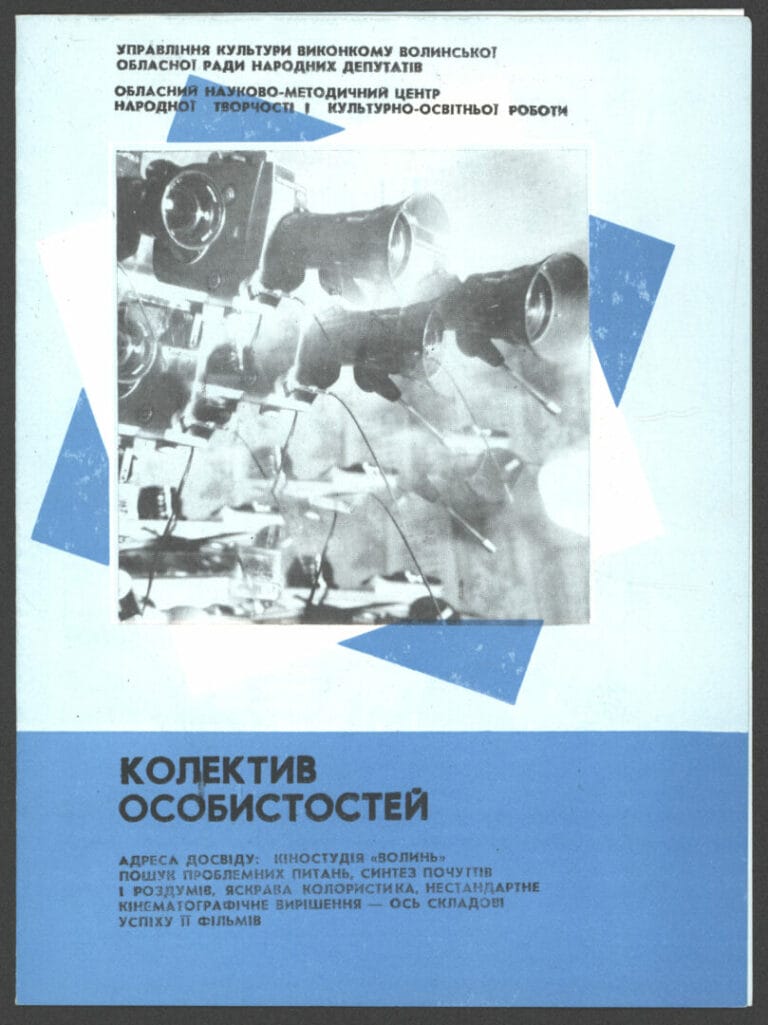
“A Collective of Individuals.” Booklet of the Volyn Amateur Film Studio, 1987
The source provided below is a promotional booklet from the Soviet amateur film studio “Volyn,” located in Lutsk. Unlike studios that were under the authority of and funded by trade union organizations, this studio was affiliated with the oblast department of culture. The booklet highlights the achievements and activities of the studio. This type of publication was widely circulated and exchanged at competitions and festivals of various levels. The presence of such printed materials could further indicate the level of financial support for the studio.
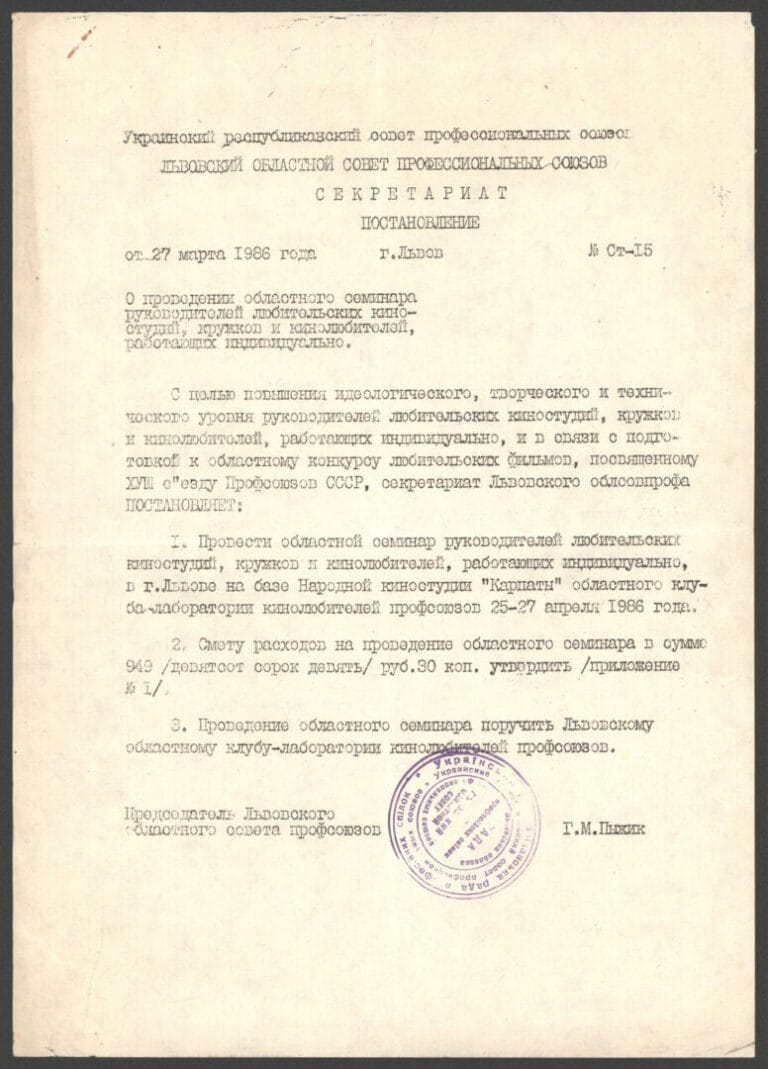
Resolution on work of Lviv oblast amateur film studios, clubs, and cinematographers, 1986
This document is a resolution of the Lviv Oblast Council of Trade Unions regarding the organization of an oblast seminar for leaders of amateur film studios, clubs, and cinematographers. It is a common example illustrating the degree of formalization and bureaucratic structuring within the coordinated amateur film community during the Soviet era. In its contents, we discern a distinct chain of command prevalent within the inter-republican hierarchy: the Ukrainian Republican Council of Trade Unions — the Lviv Oblast Council of Trade Unions — the Lviv Oblast Club-Laboratory of Trade Union Cinematographers — People’s Film Studio (one among several).
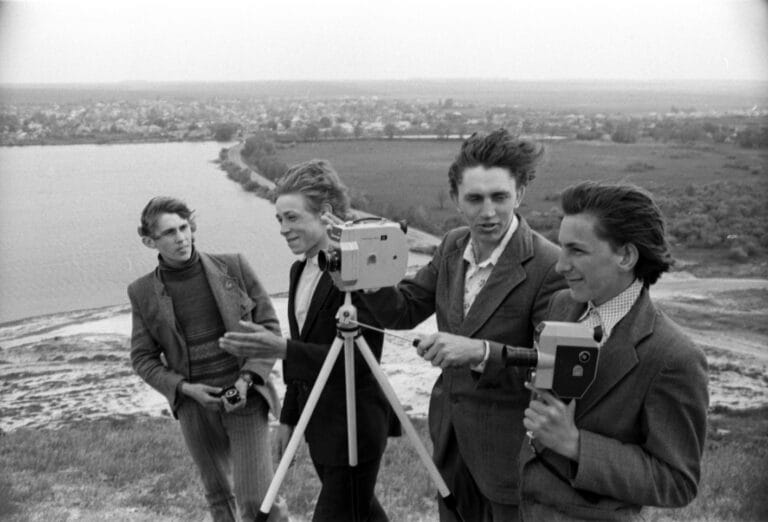
Members of the cinema club in the village of Novooleksandrivka, Ukrainian SSR, during a film shoot, May 1981
In addition to film studios, which predominantly comprised adults, the network of amateur filmmaking also encompassed groups tailored for children and teenagers, typically organized within houses of culture or schools. Oversight of these groups was typically carried out by representatives from People’s Studios and local film clubs. The archival caption of this photograph reads as follows: “Members of the cinema club at the House of Culture in the village of Novoaleksandrovka, Belovodsk district, Voroshilovgrad oblast, during a film shoot. From left to right: students Naydysh A, Petrov P, the club’s leader Kolesnik V. I., student Burian V. — village Novoaleksandrovka, 15 May 1981, by Y. Khromushyn (outdoors against the backdrop of a river).”
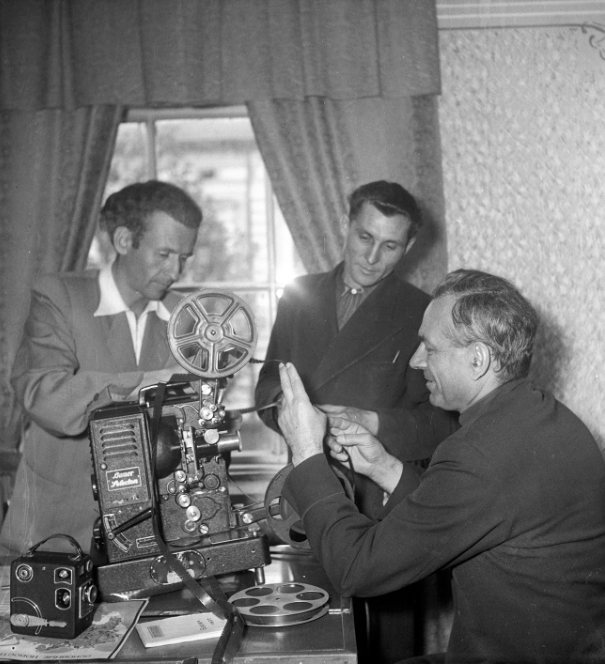
Film amateurs of the steam locomotive and car repair plant, photograph dated of 1956
“The initiators of a film studio at the steam locomotive and truck repair plant (from the left to the right) Slutskyn S.S., Art Club Director of Tool and Inventory Shop, Skybalo G.L., Director of Radio Broadcasting Center, and Zirka A.V. are looking through the first shots of the new film about the plant, Lviv December 7th, 1956". This archival record accompanies this photograph in the Central State Audio/Visual and Electronic Archive (until the recent times called Central State G.S. Pshenychnyi Filming Archive) in Kyiv. Despite it is the official representation of film amateurs that was probably created for the purpose of media publications, careful analysis of the details makes it possible to discern...
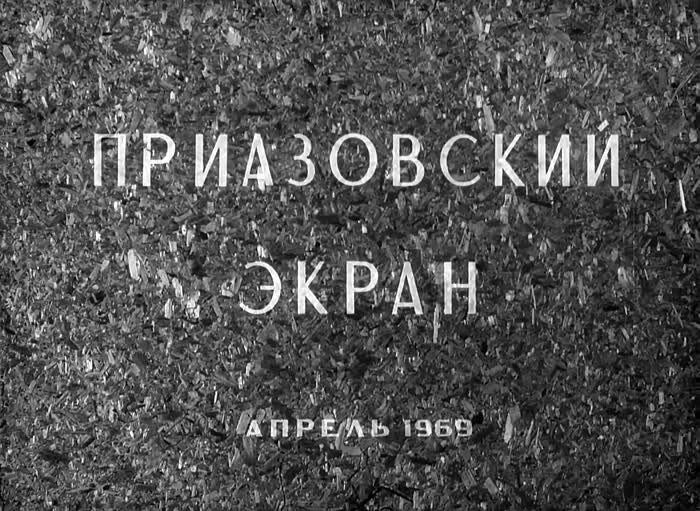
“Screen of Pryazovia” (Pryazovskyi Ekran) № 1, 1969
This newsreel is a valuable source on the history of the development of the Mariupol industry. It was produced by the city club of film amateurs. Following the example of the Ukrkinochronika studio in the capital city which published the main newsreels in the republic, the authors of this piece created a short film report with 4 stories that tell about the deputies, the introduction of innovations in blast furnace steelmaking, about the winners of the socialist competition, and about the meeting of workers with a Soviet cosmonaut.
The early vision of amateur filmmaking in the Soviet Union was characterized by the pragmatic idea of using the new media not only for entertainment but also to involve a wide range of citizens in the production of newsreels and to create a network of correspondents across the country to cover the construction of socialism. However, despite sporadic attempts, this idea was not immediately implemented on a large scale. The lack of technology and sufficient equipment, and later the political climate of the 1930s, hindered this. It was only after liberalization and Khrushchev's reforms that the idea reappeared on the agenda.
Worked on the material:
- Research, comment
Oleksandr Makhanets
- Translation into English
Yuliia Kulish
Comments and discussions

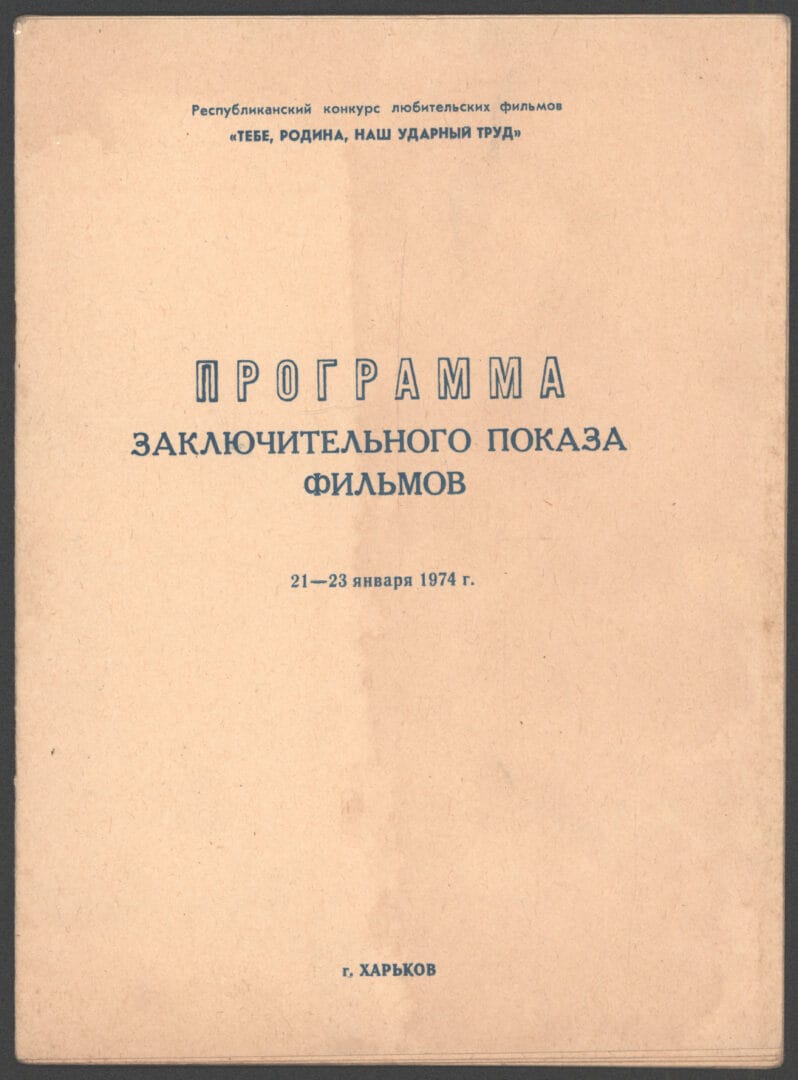
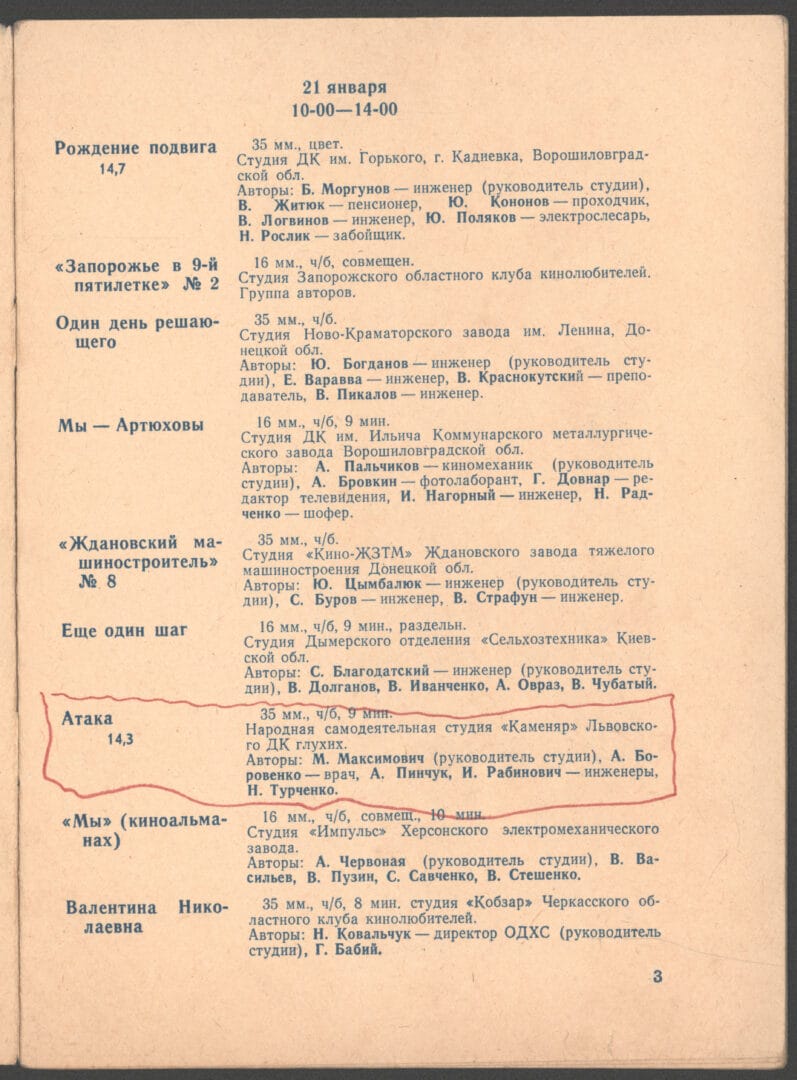
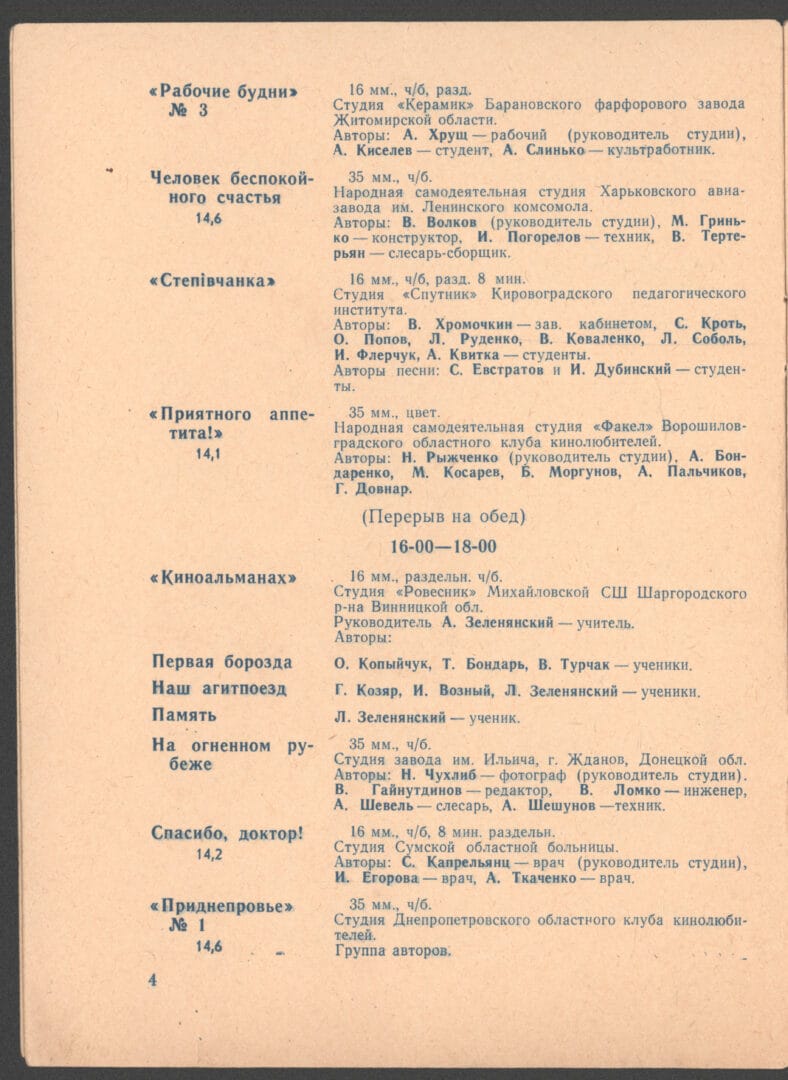
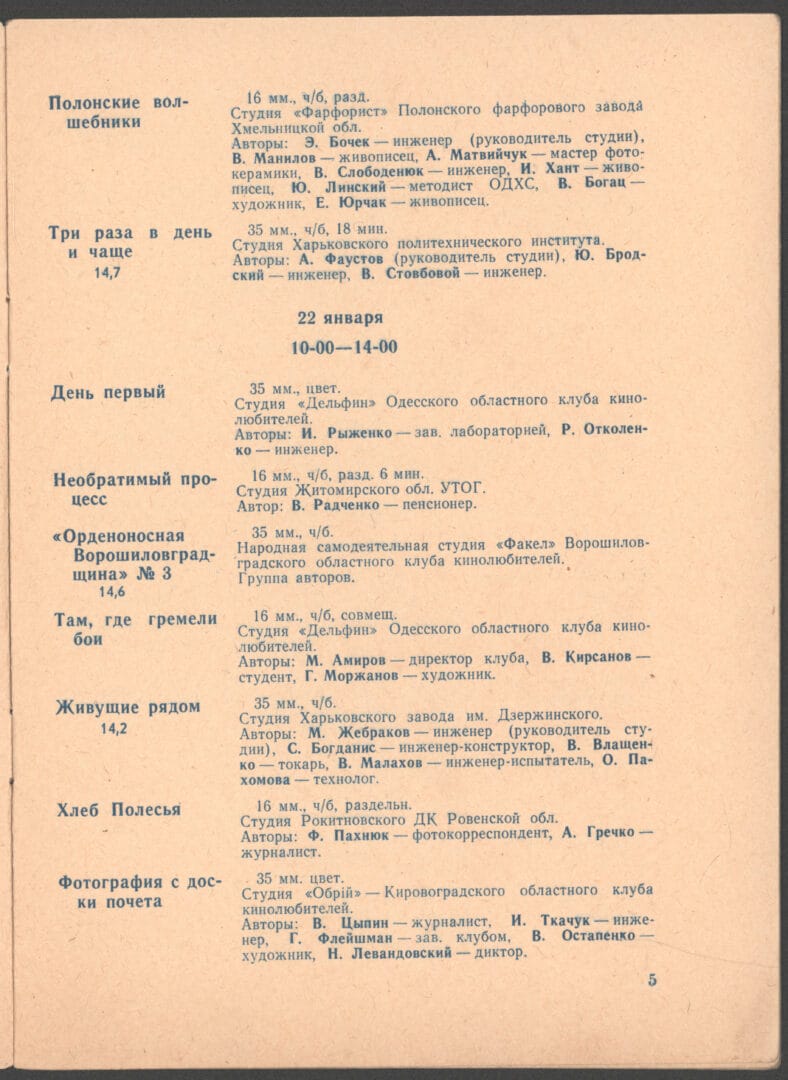
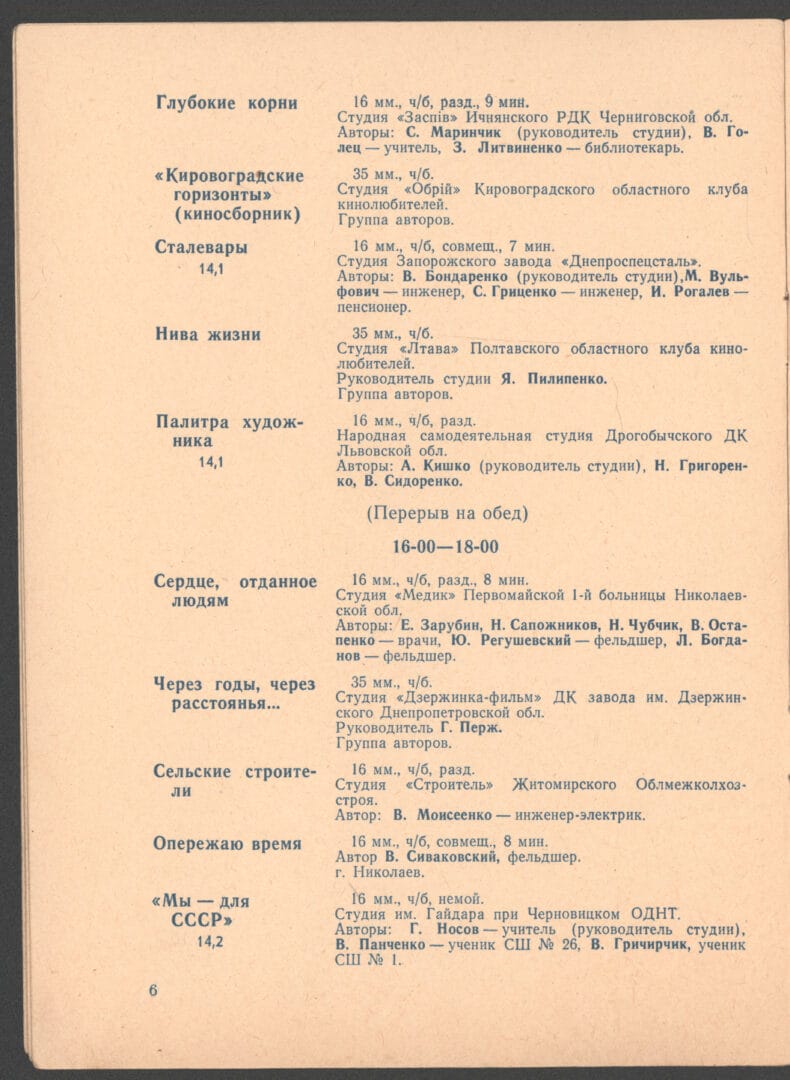
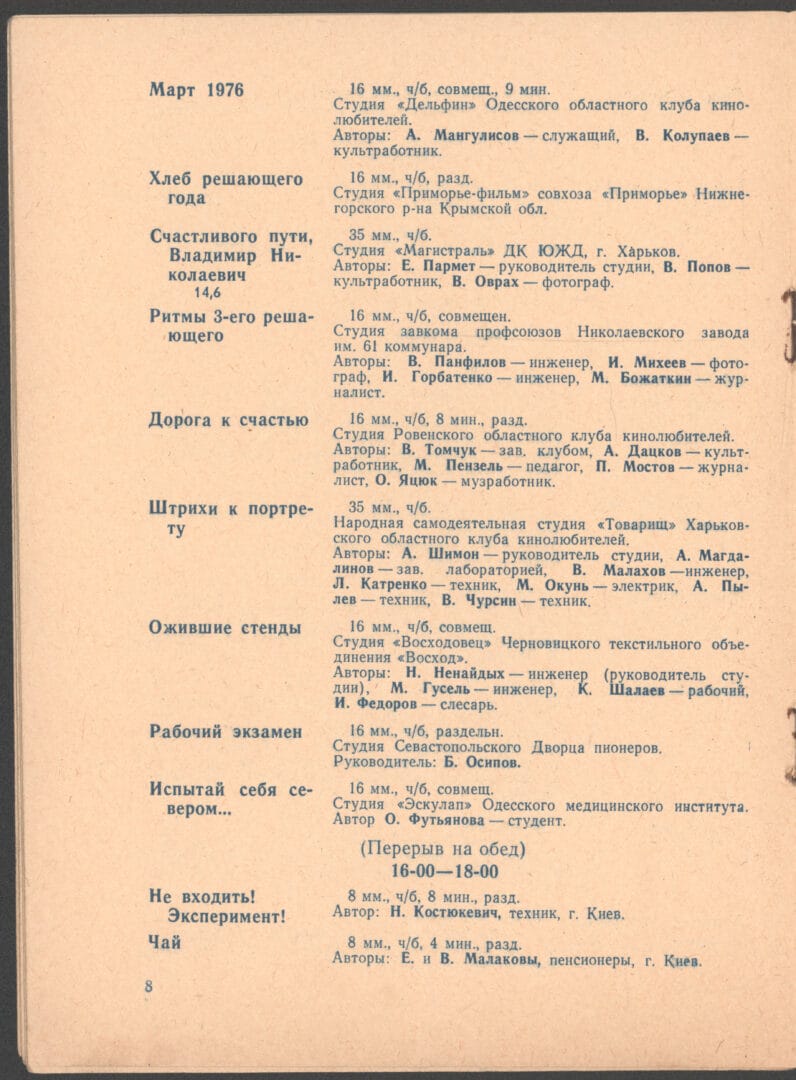



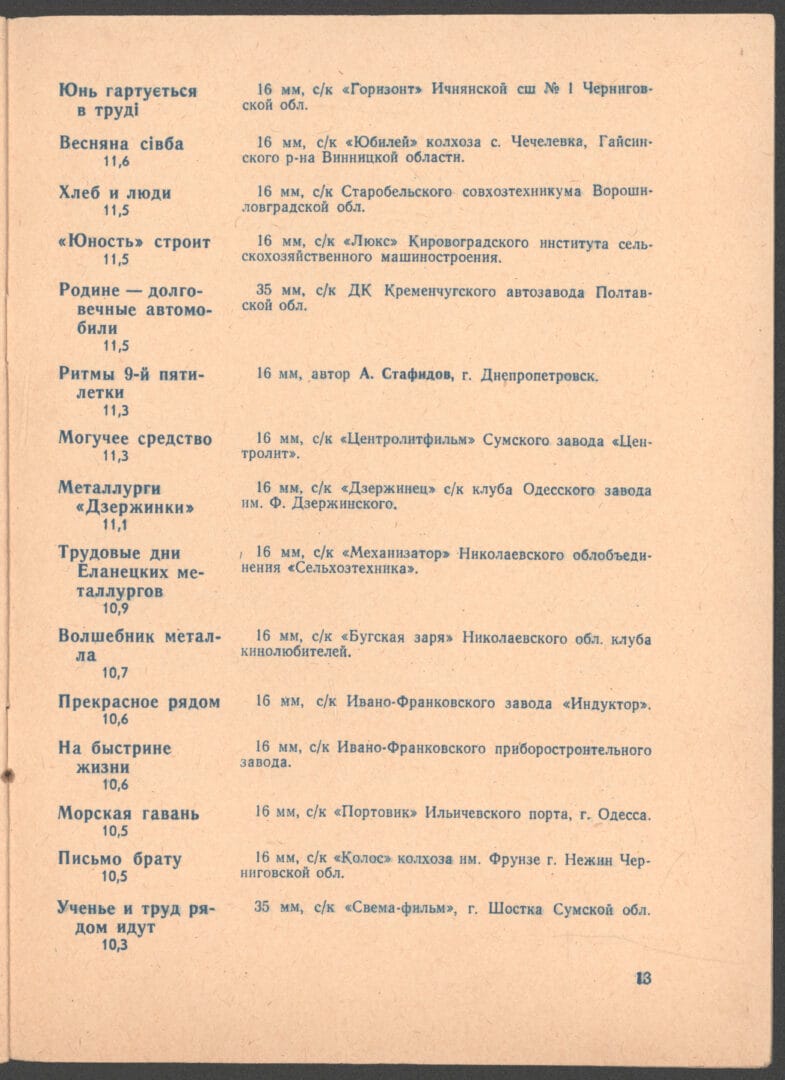
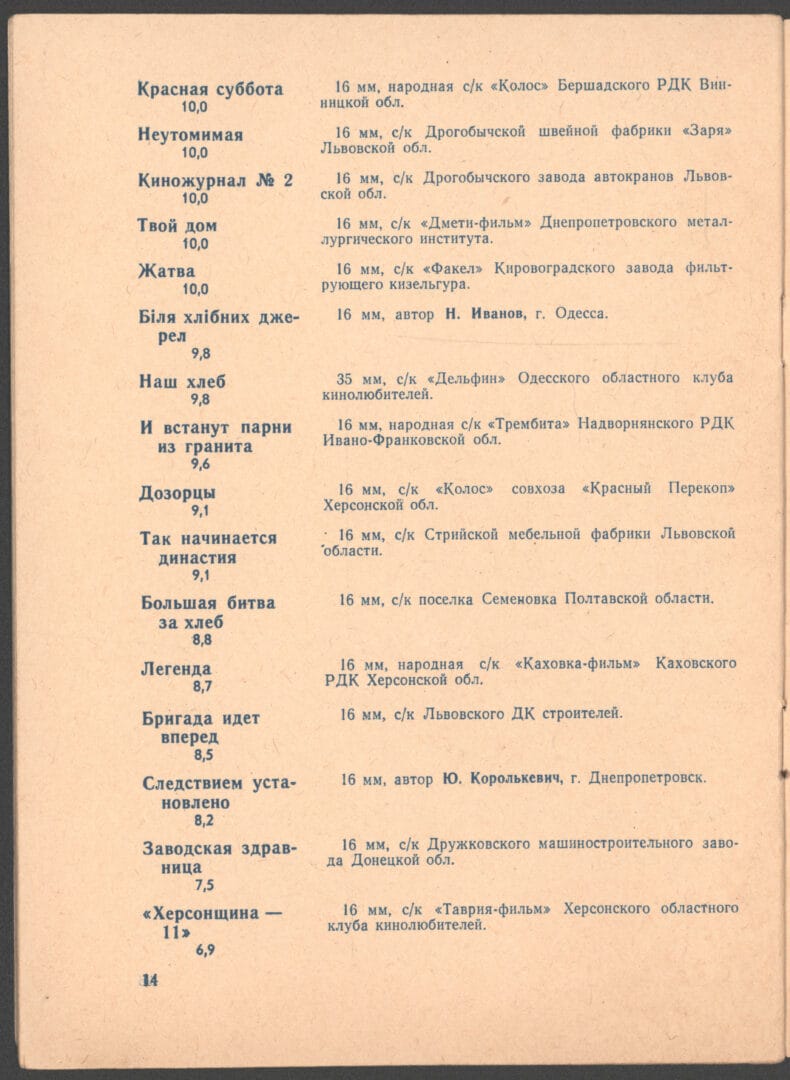
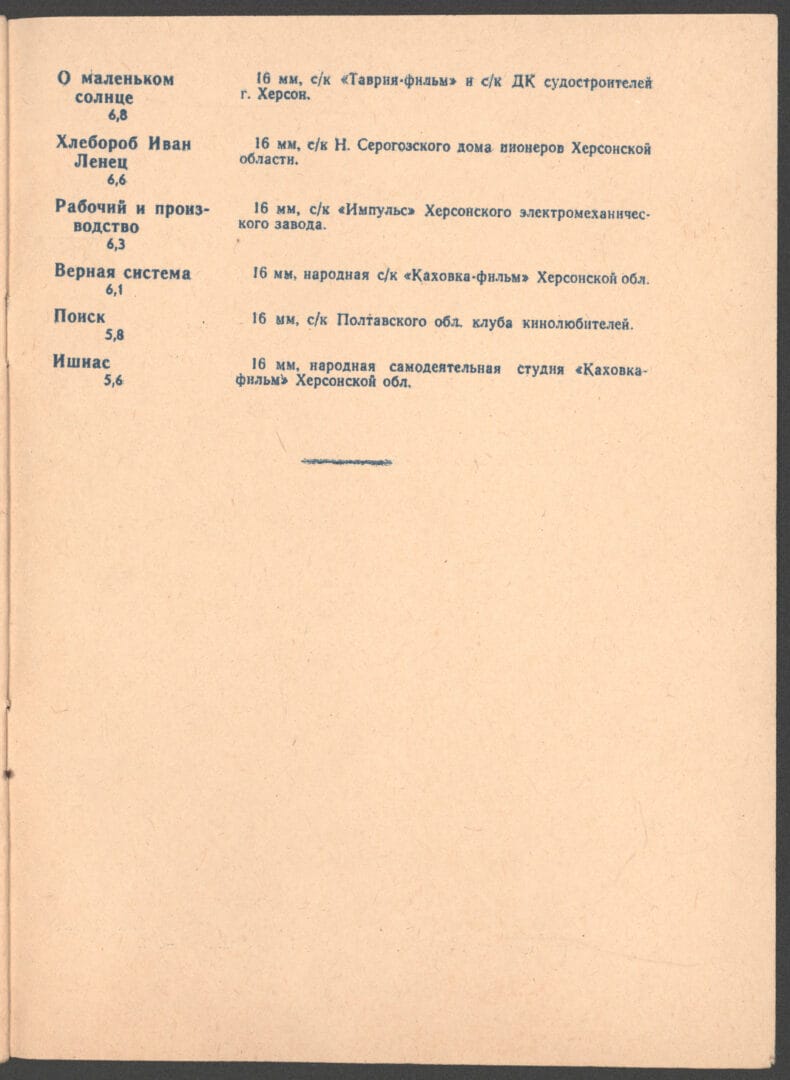
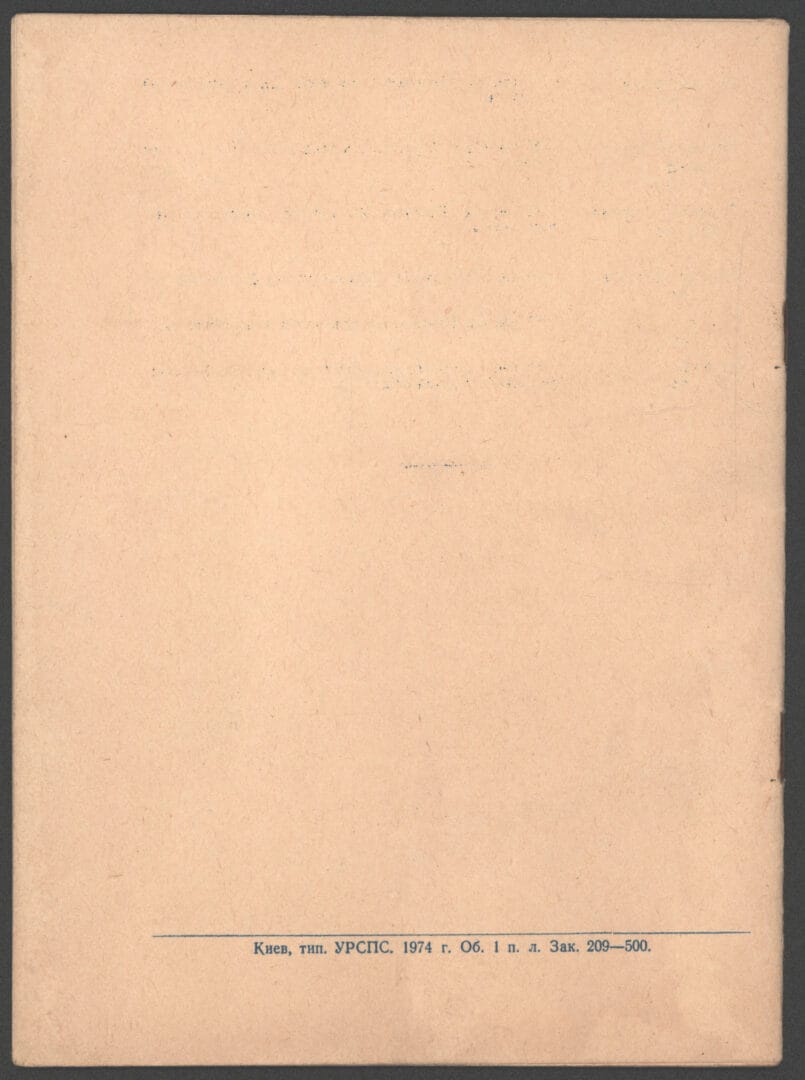
This program is part of the multi-stage film selection for the Soviet-wide competition “For You, Motherland, Our Hard Work.” It features a compilation of works from the most active studios in the Ukrainian SSR at the time, including film titles and authors’ names. It provides information on the gender and social distribution within the amateur filmmaking movement, as well as its geographic spread. It is striking to note that most listed authors are men. Characteristically, each name is accompanied by a profession, though not always accurate, highlighting the diversity of individuals involved in amateurism. Attention can also be drawn to the film titles and their formats. Many amateurs utilized the professional 35mm format, but it is equally intriguing that several 8mm films were selected. The propagandist spirit of the event and the selected works is quite transparent. In the program, the film Attack from the Kameniar People’s Studio of the Lviv House of Culture for the Deaf is highlighted in red (p. 3). This document originates from the archives of that studio. The selection process lasted from 1973 to 1974, and the best films were presented by the republican program of the Ukrainian SSR at the final all-Union event in the city of Kalinin (now Tver, RF) in March 1974.